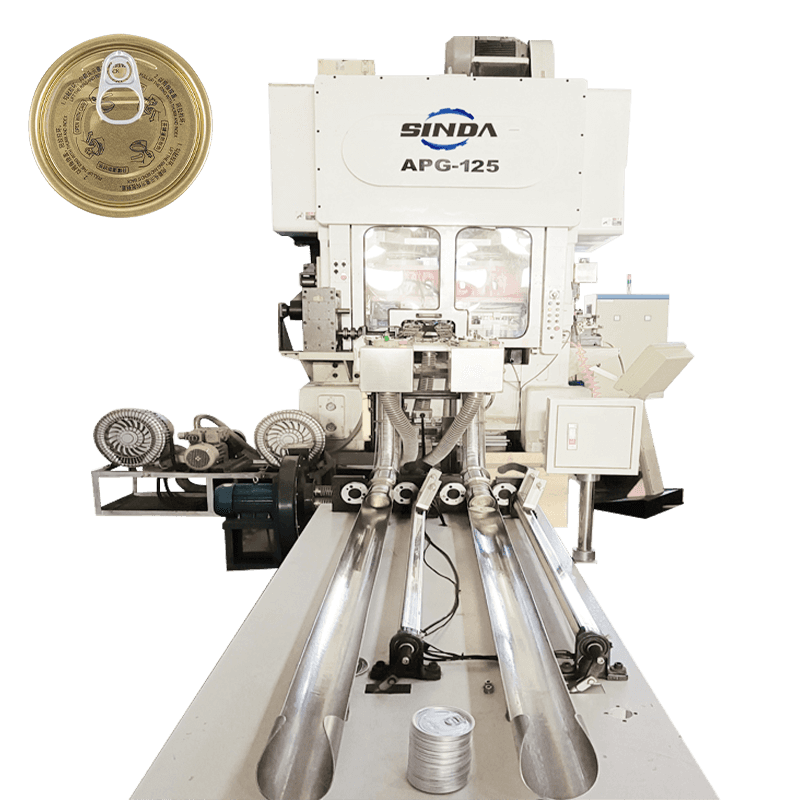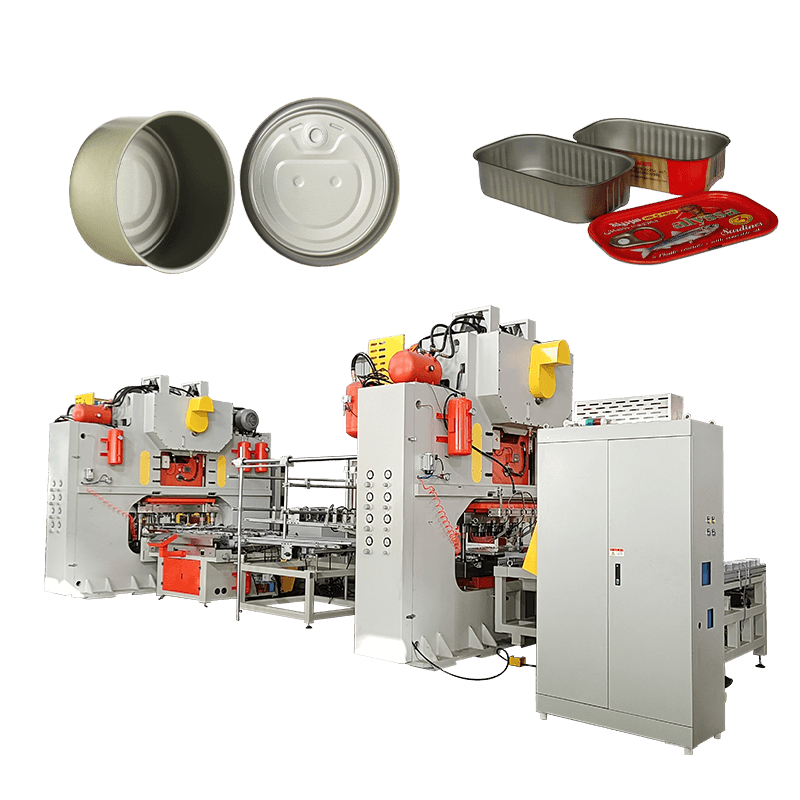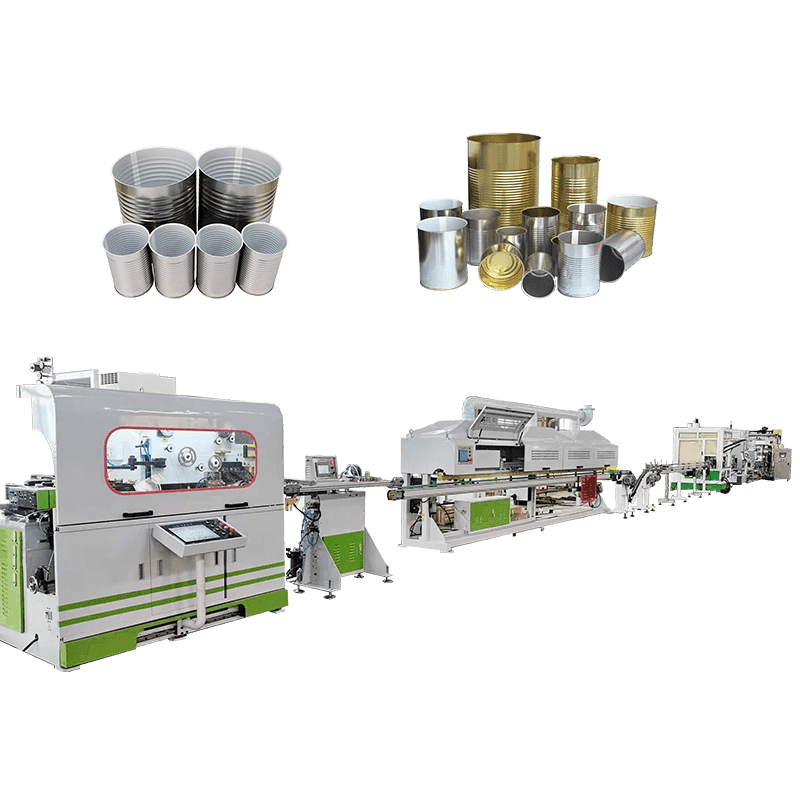Introduction to Pressure and Corrosion Resistance in Aerosol Tin Can Production
The aerosol tin can production line is responsible for manufacturing containers that hold pressurized substances such as cosmetics, household chemicals, automotive products, and industrial sprays. These cans must withstand internal pressure during filling, storage, transportation, and usage. In addition, the container interior and exterior surfaces are often exposed to propellants, solvents, or environmental moisture, requiring reliable corrosion resistance. The production process involves multiple stages that contribute to these properties, including material selection, forming accuracy, surface treatments, and quality inspections. This article explains how the aerosol tin can production line ensures pressure resistance and corrosion resistance through each critical stage and highlights the tools, coatings, inspections, and testing measures used to maintain product reliability.
Material Selection and Tinplate Specifications
The foundation of pressure resistance begins with the tinplate material used in aerosol can production. Manufacturers typically choose steel sheets coated with tin or chromium to form the base structure. The thickness, tensile strength, and coating weight are selected based on the intended use, internal pressure levels, and compatibility with the contents. Tinplate often has uniform grain distribution and consistent mechanical properties so the forming process does not compromise structural integrity. When selecting the material, the production line coordinates with suppliers to ensure each coil meets designated standards, providing a consistent baseline for mechanical performance and corrosion protection. This approach helps ensure that each can body has adequate strength to resist deformation or bursting under normal pressure ranges.
Forming Processes and Structural Integrity
The forming stage affects how well a tin can will resist internal pressure. Processes such as blanking, cupping, drawing, and necking require precise control of force and alignment. Excessive thinning at the corners or uneven deformation can reduce the can’s ability to withstand pressure. The production line uses advanced stamping equipment and lubricants to maintain consistent wall thickness across the can body. Tooling is regularly calibrated to minimize dimensional deviations. By forming the can body in stages, manufacturers prevent abrupt stress accumulation and maintain structural uniformity. A combination of precise forming dies and smooth transitions between forming steps enhances pressure resistance without overburdening the material.
Seam and Joint Quality Assurance
Aerosol tin cans use welded or seamed joints to close the body and attach the top and bottom ends. The welding method typically involves electric resistance welding or laser welding to create a consistent seam that does not compromise structural strength. Operators monitor the weld parameters such as current, speed, and pressure to ensure the seam remains airtight and mechanically stable. The production line may integrate real-time sensors to detect any welding inconsistencies that might compromise pressure resistance. For three-piece cans, the side seam must resist internal pressure without splitting or leaking. Proper seam overlap, alignment, and protection coatings ensure that the joint area remains both mechanically strong and resistant to corrosion.
Internal Coating Application
Corrosion resistance relies on the quality of internal coatings applied to the tin can interior. The coating protects the metal from reacting with the product or propellant stored within the container. In the production line, internal lacquers or epoxy-based coatings are sprayed or roller-coated onto the interior surface. The can then undergoes a curing process that uses controlled heat to ensure the coating bonds evenly. The coating thickness is monitored to avoid cracking, blistering, or thin patches. By using specialized formulations that meet regulations for food, cosmetics, or chemical compatibility, the production line maintains a barrier that helps preserve the metal’s integrity and reduce corrosion risk over time.
External Coating and Surface Protection
The aerosol tin can’s exterior is also treated to protect against environmental corrosion. External coatings can include protective varnishes or lithographed finishes. These coatings help shield the metal from moisture, handling damage, and atmospheric contaminants. The application technique is similar to internal coating processes, involving spraying or printing equipment that ensures consistent coverage. By maintaining a clean production environment and controlling temperature and humidity, the line prevents defects in the protective layer. Although the internal surface faces more direct chemical exposure, the external surface also requires attention to ensure the can does not develop corrosion spots that might affect structural stability or appearance during its lifecycle.
Heat Treatment and Curing
Coatings applied to aerosol tin cans require proper curing to ensure adhesion and long-term performance. In many production lines, the cans pass through ovens or thermal curing tunnels. Temperature and dwell time are carefully regulated to prevent undercuring or overcuring. Underheated coatings may peel or crack, reducing corrosion resistance. Overheated coatings can weaken adhesion or create internal stress. Automated systems monitor temperature distribution to keep coatings both flexible and durable. The resulting cured coating layer supports both pressure resistance and corrosion resistance by forming a consistent barrier on the metal surface that maintains stability over time.
Necking and Flanging Processes
After forming the main body, some aerosol cans undergo necking to reduce the top diameter, allowing for proper valve mounting. This step requires precise tooling to ensure uniform wall thickness and roundness. The flanging process creates a lip or rim where the top end or valve component will be attached. Both necking and flanging require careful control to avoid creating thin or stressed regions. These steps influence the pressure resistance since the top region experiences stress when the can is pressurized. The production line ensures that dimensional control and smooth transitions prevent localized weak points that might lead to deformation or cracking under pressure.
Valve Cup and Bottom End Assembly
The valve cup and bottom end play key roles in overall can strength. A tight and consistent attachment ensures that the container can handle the pressure generated by the propellant gas. During assembly, seaming machines form a hermetic seal between the can body and the ends. The depth of the seam, the folding angle, and the pressure used in the seaming rollers all contribute to sealing performance. If the seam or fold is uneven, internal pressure might cause leakage or deformation. Quality control procedures verify that each end attachment is properly formed to maintain both structural integrity and corrosion protection. A uniform seam prevents moisture or chemicals from entering and corroding the seam area.
Pressure Testing Procedures
To verify pressure resistance, the production line often incorporates hydrostatic or pneumatic tests. These tests subject a sample of cans to pressures above their normal operating range to confirm that they can withstand elevated internal forces without bursting. The test station may fill the can with water or air and observe the can for any leaks, dimensional changes, or failures. The results help define a safety margin for the final product. Automated systems record test data to trace performance and enable continuous improvements. Some production lines follow industry or regional standards that outline the specific testing methods and acceptable performance criteria for pressure resistance.
Corrosion Resistance Testing and Monitoring
Ensuring corrosion resistance involves exposing sample cans to accelerated aging or chemical tests that simulate real usage conditions. Manufacturers may expose the coated surface to various solvents, propellants, and humidity conditions to assess how the coating and metal respond over time. Salt spray tests or environmental chamber tests are used to check the durability of both internal and external coatings. By evaluating changes in appearance, pitting, or blister formation, engineers can identify whether the protective layers are sufficient. This testing informs any adjustments to the coating formulation, application method, or curing parameters. Continuous monitoring ensures that each batch meets corrosion resistance criteria before distribution.
Table of Key Factors Influencing Resistance
To illustrate the range of factors that influence pressure and corrosion resistance, the following table provides a simplified reference showing various aspects of the production process:
| Aspect | Pressure Resistance Impact | Corrosion Resistance Impact |
|---|---|---|
| Material Thickness | Supports internal load | Neutral baseline protection |
| Coating Quality | Minimal indirect effect | Direct barrier against chemical attack |
| Forming Precision | Prevents weak spots | Maintains coating adhesion |
| Seam Integrity | Prevents splits under pressure | Protects seam from rust |
| Testing Procedures | Ensures burst resistance | Evaluates coating durability |
Inspection and Quality Control Systems
Aerosol can production lines often include in-line inspection systems that examine dimensional accuracy, seam quality, and coating uniformity. Vision systems can detect surface defects or misalignments that might compromise integrity. Thickness gauges measure wall and coating layers to prevent weak areas. Data tracking systems record performance to identify potential trends or recurring issues. If a defect is detected, the can may be rejected or reworked. By integrating inspection at multiple stages, the line reduces the likelihood of cans with insufficient pressure or corrosion resistance leaving the facility. Quality inspectors and maintenance personnel ensure that equipment is functioning correctly and that test results remain within established tolerances.
Preventive Maintenance and Equipment Calibration
Machinery that handles forming, seaming, coating, and testing requires periodic maintenance to sustain performance. Worn tooling can create uneven deformation, while misaligned sprayers can lead to inconsistent coatings. Preventive maintenance schedules are followed to help the equipment remain accurate. Calibration routines ensure that measurement instruments provide reliable data. By maintaining machines and tools in optimal condition, the production line avoids conditions that could reduce pressure resistance or allow corrosion to develop. This ongoing attention to detail supports consistent quality across batches and reduces the risk of returns or safety issues.
Traceability and Documentation
Modern aerosol tin can production facilities maintain documentation for each batch, including material sources, coating formulations, test results, and inspection records. Traceability allows manufacturers to identify and address potential issues quickly. If a problem is discovered regarding coating thickness, seam alignment, or pressure test performance, the production line can recall affected lots for further analysis. Documentation also supports compliance with safety standards and helps ensure that products meet regulatory requirements. Transparent record-keeping strengthens confidence in the reliability of the final aerosol cans and supports improvements over time.
Continuous Improvement and Innovation
As market demands and regulatory frameworks evolve, production lines continue to refine methods that influence resistance properties. New coating materials, automated inspection systems, and improved forming technologies can further enhance pressure and corrosion performance. Engineers analyze operational data to identify opportunities to reduce waste, optimize curing conditions, or increase testing accuracy. Collaboration with chemical suppliers and equipment manufacturers helps refine the balance between structural strength and corrosion protection. Incremental improvements in each stage contribute to long-term reliability and stability in aerosol can production.
Training and Workforce Competency
Human involvement remains an important factor in ensuring pressure and corrosion resistance. Operators must understand how to monitor equipment, adjust parameters, and recognize early signs of defects. Training programs help them identify possible issues in coating application, seam formation, or temperature control during curing. Maintenance teams benefit from instruction on detecting wear in tooling and calibrating measurement devices. Quality control staff require familiarity with testing protocols and interpretation of results. By fostering workforce competency, the production line reduces the risk of oversight and upholds consistent production standards throughout each batch.
Regulatory Standards and Industry Guidelines
Various standards guide the design, manufacture, and testing of aerosol tin cans. Industry associations and government agencies specify minimum performance requirements for pressure resistance and material compatibility. Compliance with such guidelines influences material selection, test procedures, labeling, and documentation. Standards may also address aspects such as internal coatings for food-related products or external durability for industrial uses. Production lines work within this framework to confirm that finished cans meet or exceed the thresholds established for safety and quality. Following these guidelines helps businesses align with market expectations and regulatory obligations.

 English
English عربى
عربى русский
русский




